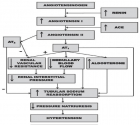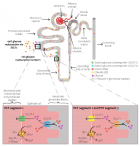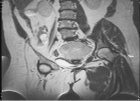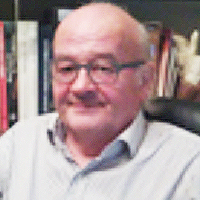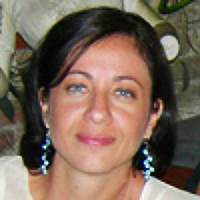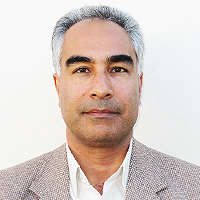Abstract
Research Article
Normal Value of Skull Base Angle Using the Modified Magnetic Resonance Imaging Technique in Thai Population
Siriporn Hirunpat*, Nat Wimolsiri and Nuttha Sanghan
Published: 20 March, 2017 | Volume 2 - Issue 1 | Pages: 017-021
Purpose: To determine the normal value of basal angle measured using the modified MR imaging technique in Thai population compared with the standard value obtained from the Western population.
Material and Methods: We retrospectively evaluated midline sagittal SE T1 weighted MR images in 200 adults and 50 children. The basal angle of the skull base was measured using the modified MR imaging technique described by Koenigsberg et al. The angle was formed by a line extending across the anterior cranial fossa to the tip of the dorsum sellae and another line drawn along the posterior margin of the clivus. The mean values of the basal angles among different age groups and sex were calculated and analyzed.
Results: The mean skull base angle of our adult population was 115° (range 100.5°-130°, SD=5.7) with an inter-observer agreement of 0.85, slightly smaller than the previous study from the USA which was 117°. There was no significant difference between the male and female groups. The mean skull base angle in our children population was 114.7° (range 102- 130.5°, SD=6.3) with an inter-observer agreement of 0.89, quite similar to the previous USA study which was 114°. There was no significant difference between adult and children.
Conclusion: The mean adult skull base angle measured using the modified MR imaging technique in Thai population was slightly smaller than the Western population, while the mean skull base angle of children was quite similar. The basal angle range of 103.6°-126.4° may be used as a guide for the potential range of normal skull base angles in Thai population and possibly also the Southeast Asian population.
Read Full Article HTML DOI: 10.29328/journal.johcs.1001006 Cite this Article Read Full Article PDF
References
- Koenigsberg RA, Vakil N, Hong TA, Htaik T, Faerber E, et al. Evaluation of platybasia with MR imaging. AJNR Am J Neuroradiol. 2005; 26: 89-92. Ref.: https://goo.gl/nqrBmr
- Burgener FA, Komano M, Pudas T. Differential Diagnosis in Conventional Radiology. 3rd ed. New York: Thieme 2008.
- Suwanwela N, Suwanwela C. Radiology of skull. Bangkok: Chulalongkorn Press. 1983.
- Nawata H. [On x-ray craniometry in clinical neurology. II. Studies on statistics and various methods of measurement of 500 normal and 50 abnormal persons]. No To Shinkei. 1963; 15: 467-473. Ref.: https://goo.gl/fyDraf
- Nawata H. [Roentgencraniometry in clinical neurology. I. Critical study of statics and various methods of measurement in 500 normal persons and 50 normal cases]. No To Shinkei. 1963; 15: 385-398. Ref.: https://goo.gl/ti85NR
- Bambakidis NC, Dickman CA, Spetzler RF, Sonntag VKH. Surgery of the Craniovertebral Junction. 2nd ed. New York: Thieme. 2013.
- Farrer RM, Meschan I. Roentgen Signs in Diagnostic Imaging, Spine and Cervical Nervous System. 2nd ed. Philadelphia: WB Saunders; 1985.
Figures:
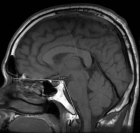
Figure 1

Figure 2

Figure 3
Similar Articles
-
Infection Control Mechanisms Employed by Dental Laboratories to Prevent Infection of their Dental Technicians/TechnologistsKilimo C Sammy*,Simiyu N Benjamin. Infection Control Mechanisms Employed by Dental Laboratories to Prevent Infection of their Dental Technicians/Technologists. . 2016 doi: 10.29328/journal.johcs.1001001; 1: 001-011
-
Evaluation of ImageJ for Relative Bone Density Measurement and Clinical ApplicationManuel Geiger*,Galina Blem,Arwed Ludwig. Evaluation of ImageJ for Relative Bone Density Measurement and Clinical Application . . 2016 doi: 10.29328/journal.johcs.1001002; 1: 012-021
-
Promising Future in the Detection of Oral Cancer by Using Advance Screening TechnologyMohamed Yasser Kharma*,Mohamed Sadek Alalwani,Manal Fouad Amer. Promising Future in the Detection of Oral Cancer by Using Advance Screening Technology . . 2016 doi: 10.29328/journal.johcs.1001003; 1: 022-33
-
Evaluation of Horizontal Lip Position in Adults with Different Skeletal Patterns: A Cephalometric StudyRohit Kulshrestha*,Vinay V Umale,Kamlesh Singh,Aftab Azam,Madhvi Bhardwaj. Evaluation of Horizontal Lip Position in Adults with Different Skeletal Patterns: A Cephalometric Study . . 2017 doi: 10.29328/journal.johcs.1001005; 2: 009-016
-
Normal Value of Skull Base Angle Using the Modified Magnetic Resonance Imaging Technique in Thai PopulationSiriporn Hirunpat*,Nat Wimolsiri,Nuttha Sanghan. Normal Value of Skull Base Angle Using the Modified Magnetic Resonance Imaging Technique in Thai Population . . 2017 doi: 10.29328/journal.johcs.1001006; 2: 017-021
-
Comparative Study of Enophthalmos Treatment with Titanium Mesh Combined with Absorbable Implant vs. Costochondral Graft for Large Orbital Defects in Floor FracturesMalagón Hidalgo*,Héctor Omar,González Magaña,Fernando, Kalach Mussali,Alberto Jaime,Mejía Valero,Sergio Abraham,Vilchis López,Roberto,Araiza Gómez,Edgardo,Kalach Mussali. Comparative Study of Enophthalmos Treatment with Titanium Mesh Combined with Absorbable Implant vs. Costochondral Graft for Large Orbital Defects in Floor Fractures . . 2017 doi: 10.29328/journal.johcs.1001007; 2: 022-29
-
Visualization and Evaluation of Changes after Rapid Maxillary ExpansionIlija Christo Ivanov*,Dagmar Strakova,Tatjana Dostalova,Jan Dupej,Sarka Bejdova,Veronika Ciganova. Visualization and Evaluation of Changes after Rapid Maxillary Expansion . . 2017 doi: 10.29328/journal.johcs.1001008; 2: 030-37
-
Orthodontics Miniscrews to Correct an Anchorage Loss: Case ReportHoub-Dine A*,Zaoui F. Orthodontics Miniscrews to Correct an Anchorage Loss: Case Report. . 2017 doi: 10.29328/journal.johcs.1001009; 2: 038-042
-
External Root Resorption associated with Impacted Third Molars: A Case ReportRenato Marano*,Gabriela Mayrink,Paula Ramos Ballista,Laisa Kinderlly,Stella Araujo. External Root Resorption associated with Impacted Third Molars: A Case Report . . 2017 doi: 10.29328/journal.johcs.1001010; 2: 043-048
-
Clown language training in Dental education: Dental Student’s PerspectiveSiddharth Tevatia*,Richa Dua,Vinita Dahiya,Nikhil Sharma,Rahul Chopra,Vidya Dodwad. Clown language training in Dental education: Dental Student’s Perspective . . 2017 doi: 10.29328/journal.johcs.1001011; 2: 049-056
Recently Viewed
-
Chronic endometritis in in vitro fertilization failure patientsAfaf T Elnashar*,Mohamed Sabry. Chronic endometritis in in vitro fertilization failure patients. Clin J Obstet Gynecol. 2020: doi: 10.29328/journal.cjog.1001073; 3: 175-181
-
Relation of Arachnophobia with ABO blood group systemMuhammad Imran Qadir,Sani E Zahra*. Relation of Arachnophobia with ABO blood group system. J Hematol Clin Res. 2019: doi: 10.29328/journal.jhcr.1001011; 3: 050-052
-
Preservation of Haemostasis with Anti-thrombotic Serotonin AntagonismMark IM Noble*,Angela J Drake-Holland. Preservation of Haemostasis with Anti-thrombotic Serotonin Antagonism. J Hematol Clin Res. 2017: doi: 10.29328/journal.jhcr.1001004; 1: 019-025
-
Neutrophil to Lymphocyte Ratio (NLR) in Peripheral Blood: A Novel and Simple Prognostic Predictor of Non-small Cell Lung Cancer (NSCLC)Xiaoli Zhang,Ziyuan Zou,Liyu Fan,Xinjie Xu,Yu Siyuan,Peng Luo*. Neutrophil to Lymphocyte Ratio (NLR) in Peripheral Blood: A Novel and Simple Prognostic Predictor of Non-small Cell Lung Cancer (NSCLC). J Hematol Clin Res. 2017: doi: 10.29328/journal.jhcr.1001002; 1: 011-013
-
Gilbert’s Syndrome Revealed by Hepatotoxicity of ImatinibImen Ben Amor*,Imen Frikha,Moez Medhaffer,Moez Elloumi. Gilbert’s Syndrome Revealed by Hepatotoxicity of Imatinib. Ann Clin Gastroenterol Hepatol. 2025: doi: 10.29328/journal.acgh.1001049; 9: 001-003
Most Viewed
-
Evaluation of Biostimulants Based on Recovered Protein Hydrolysates from Animal By-products as Plant Growth EnhancersH Pérez-Aguilar*, M Lacruz-Asaro, F Arán-Ais. Evaluation of Biostimulants Based on Recovered Protein Hydrolysates from Animal By-products as Plant Growth Enhancers. J Plant Sci Phytopathol. 2023 doi: 10.29328/journal.jpsp.1001104; 7: 042-047
-
Sinonasal Myxoma Extending into the Orbit in a 4-Year Old: A Case PresentationJulian A Purrinos*, Ramzi Younis. Sinonasal Myxoma Extending into the Orbit in a 4-Year Old: A Case Presentation. Arch Case Rep. 2024 doi: 10.29328/journal.acr.1001099; 8: 075-077
-
Feasibility study of magnetic sensing for detecting single-neuron action potentialsDenis Tonini,Kai Wu,Renata Saha,Jian-Ping Wang*. Feasibility study of magnetic sensing for detecting single-neuron action potentials. Ann Biomed Sci Eng. 2022 doi: 10.29328/journal.abse.1001018; 6: 019-029
-
Pediatric Dysgerminoma: Unveiling a Rare Ovarian TumorFaten Limaiem*, Khalil Saffar, Ahmed Halouani. Pediatric Dysgerminoma: Unveiling a Rare Ovarian Tumor. Arch Case Rep. 2024 doi: 10.29328/journal.acr.1001087; 8: 010-013
-
Physical activity can change the physiological and psychological circumstances during COVID-19 pandemic: A narrative reviewKhashayar Maroufi*. Physical activity can change the physiological and psychological circumstances during COVID-19 pandemic: A narrative review. J Sports Med Ther. 2021 doi: 10.29328/journal.jsmt.1001051; 6: 001-007

HSPI: We're glad you're here. Please click "create a new Query" if you are a new visitor to our website and need further information from us.
If you are already a member of our network and need to keep track of any developments regarding a question you have already submitted, click "take me to my Query."







